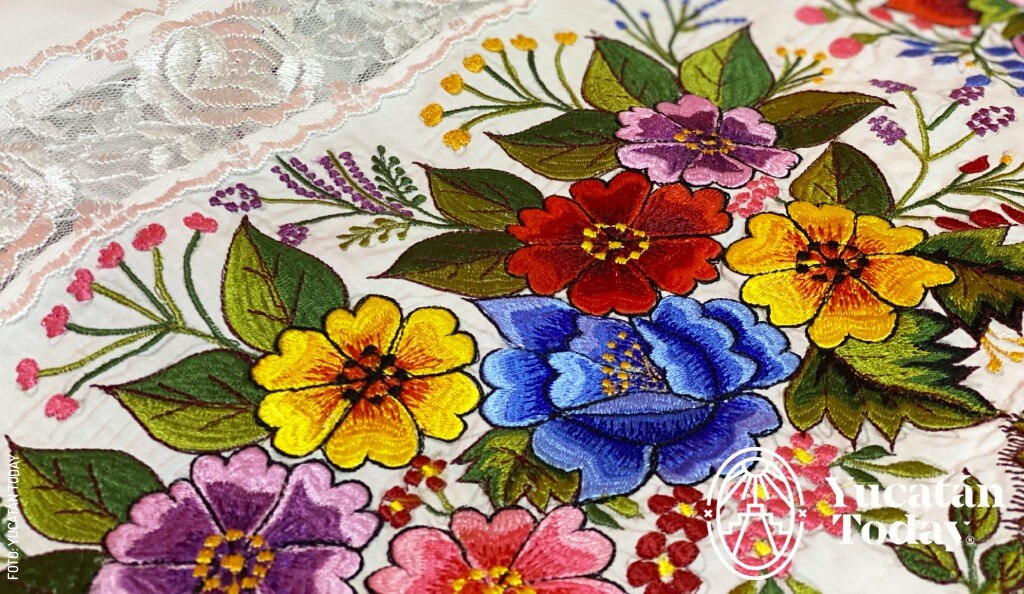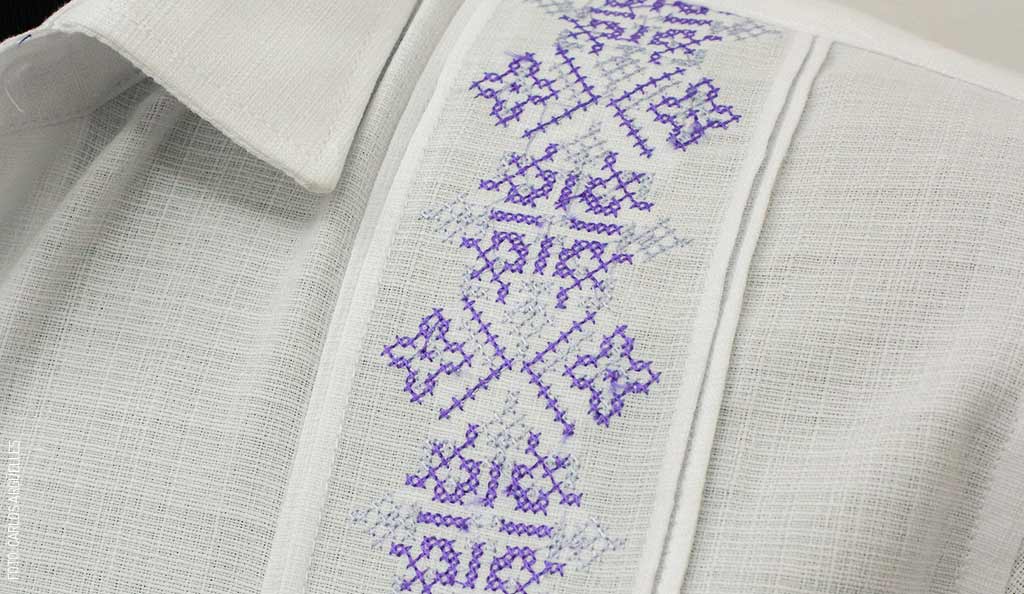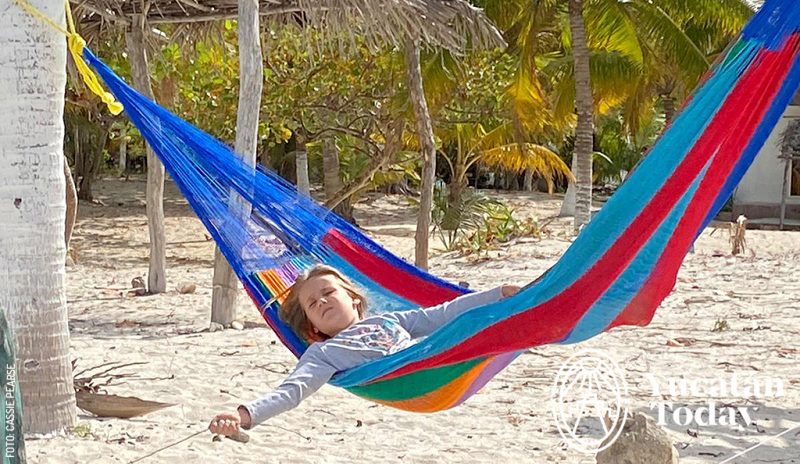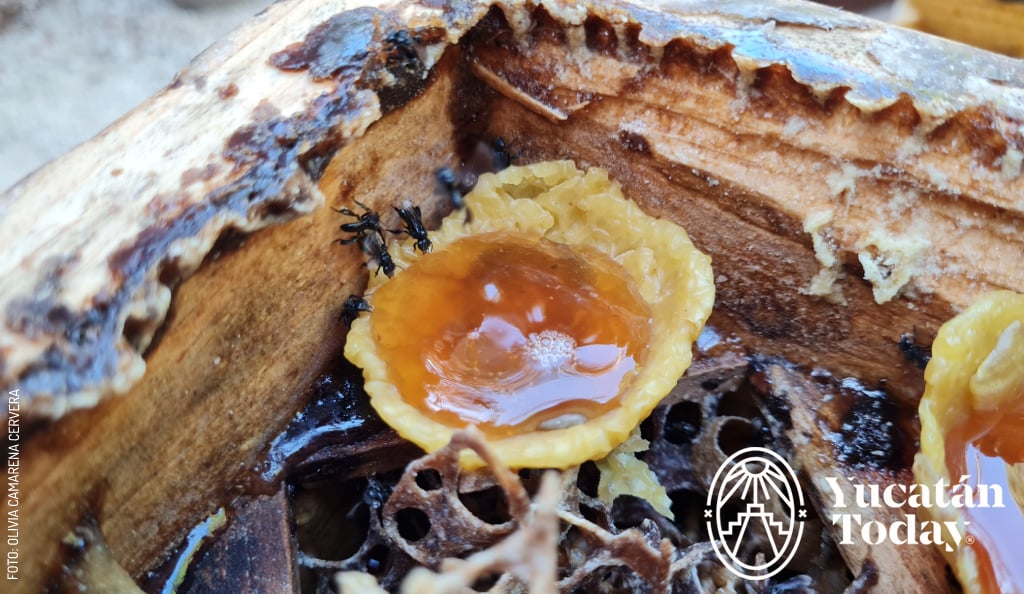Typical Yucatecan Handcrafts
You simply can’t leave Yucatán without taking home a handcraft or a product made by Yucatecan hands. Be it for a gift or for yourself, as a treat, a keepsake, or a souvenir of your stay in Yucatán, when you buy from local artisans and small producers, you support their work and help their trade survive for at least one generation longer.
%20(2).jpg)
Yucatán is a state with a deep-rooted artisanal tradition that blends pre-Hispanic and Spanish techniques, resulting in the creation of beautiful, colorful items made from a variety of materials such as henequén, palm, cotton thread and fabric, and even the region’s famous honey.
You simply can’t leave Yucatán without taking home a handcraft or a product made by Yucatecan hands. Be it for a gift or for yourself, as a treat, a keepsake, or a souvenir of your stay in Yucatán, when you buy from local artisans and small producers, you support their work and help their trade survive for at least one generation longer.
Not sure what to buy or how to choose it? Here’s a guide to help you take home some of the most iconic traditional products of the state, support local artisans, and not get ripped off in the process.
Embroidered clothing
In Yucatán, embroidery can be found in nearly every aspect of life. When it comes to clothing, the most traditional embroidered garments are hipiles and ternos, but you can now find embroidered blouses, guayaberas (traditional men’s shirts), dresses, skirts, pants, headbands, belts, earrings, and all kinds of accessories.
.jpg?width=400&height=232&name=2412%20Hipil%20Mani%20Mestiza%20y%20su%20Bordado%20by%20Yucatan%20Today%20(1).jpg)
Creating an embroidered piece can take anywhere from a few days to several months. Some of the most intricate and valued stitches in Yucatecan embroidery include xookbil chuuy (counted thread or cross-stitch), deshilado (drawn thread), and calado (cutwork). This is because they’re all fully handcrafted techniques. In xookbil chuy or cross-stitch, this becomes evident when you flip the fabric: to achieve a neat and uniform “back” made only of straight lines (with the occasional knot where the thread changes), the number of stitches in each color must be carefully counted from the very start of the work.
Deshilado, as the name suggests, involves unthreading sections of the fabric between the embroidery stitches, creating “gaps” that form different patterns. Calado, on the other hand, also incorporates open spaces in the fabric, but these are made through tiny cuts that are then shaped and reinforced with colorful threads, almost like a buttonhole.
Another traditional technique is chuuy k’aab, also known as “macizo” or satin stitch. Though done with a sewing machine, these are typically pedal-operated machines, and the embroidery is “done freehand”, meaning the artisan’s skill and precision determine the outcome, as there are no guides or stencils to assist with the design.
Prices for embroidered garments vary based on several factors:
- Type and quality of embroidery: The finer and more detailed the stitch, the more expensive the piece will be (as long as it’s handcrafted). The number of thread colors and the complexity of the design also influence the price.
- Material: Pure linen is more expensive than cotton, which in turn is more costly than polyester, though each has its pros and cons. Linen wrinkles easily, while polyester, although hotter, helps the garment hold its shape and is easier to iron.
- Sales point: Buying directly from an artisan will be different in price than buying from a high-end boutique.
As a reference, a linen or cotton blouse with satin stitch embroidery might range from $350 to $700 pesos, while a hand-embroidered cross-stitch blouse starts at around $1,500 pesos.
Don’t be fooled when shopping for embroidered garments: Computer-embroidered pieces are often sold alongside hand-embroidered ones, and it’s up to each vendor to be honest about how the piece was made. To tell the difference yourself, look at the back of the fabric. If you see synthetic backing between the fabric and the thread, it’s not hand-embroidered.
Learn more about Yucatec Maya embroidery:
- Maya Embroidery, From Antiquity to Our Days: Yucatán’s Cultural Heritage, by UNESCO
- The different types of embroidery that co-exist in Yucatán and how to tell them apart
- Hipil, Yucatán’s Traditional Dress: a Beginner’s Guide
- From Hipiles to Embroidered Blouses
Guayaberas
Although originally from Cuba, the guayabera has become a distinctive symbol of Yucatecan men thanks to its comfort and elegance. A high-quality, long-sleeved guayabera is worn at weddings and other formal events, much like a suit. Guayaberas can be made from cotton, linen, polyester, muslin (manta), or blends; the highest quality ones are made from 100% linen and/or cotton.

Traditionally, guayaberas were only made in colors like white, beige, or pastel blue, and they typically featured alforzas (pleats) instead of embroidery. However, today you can find them in all sorts of colors and embroidery styles, combined with distinctive patterns on the cuffs and collar, and in various cuts and styles, depending on the maker. Despite these variations, guayaberas remain versatile garments, which may feature multiple front pockets, meander-style embroidery, pleats, or even resemble the Filipino barong shirt.
A good guayabera can cost anywhere between $800 and $4,000 pesos, depending on the craftsmanship, material, and finishes.
Don’t be fooled when buying a guayabera: If the garment features embroidery, make sure the embroidery type (handmade or machine-made) matches the price you’re paying. Also, consider the fabric quality (linen, cotton, or polyester), as explained in the previous section.
Learn more about Yucatán’s guayabera shirt:
- Guayaberas: A Shopping and Style Guide
- How to Choose a Guayabera Like a True Yucateco
- One Day at the World’s Guayabera Capital, Tekit
- Other Typical Men’s Attire in Yucatán
Filigree
This is a handmade goldsmithing technique involving fine gold or silver threads that are twisted and shaped into intricate, unique designs. It requires a great deal of patience and is known for being lightweight, beautiful, and extremely delicate. Filigree is used to create earrings, necklaces, bracelets, and more. The most iconic Yucatecan piece is the gold filigree rosary that hangs down to the waist.

The price of each filigree piece depends heavily on the artisan, the material, and the delicacy of the technique, but you can expect to pay anywhere from $300 to well over $10,000 pesos.
Don’t be fooled when buying filigree: It’s common to come across costume jewelry designed to look like filigree. When selecting a piece, inspect it carefully to make sure the entire item is made of fine threads of the chosen material.
Learn more about Yucatecan filigree:
Hammocks
The origin of the hammock is debated, though we know the word comes from Haiti. What’s certain is that the hammocks used in Yucatán are a deeply rooted part of the region’s identity, and have been handcrafted and used here for over four centuries. In Yucatán, hammocks are not merely decorative or recreational: they often serve as a chair, couch, and bed in many households.

Weaving a hammock is an art that takes more than three weeks for a single piece, making each one unique. Hammocks come in individual, double, and king sizes, based on their width and the number of thread “boxes” used in their making. The price and quality of a hammock depend on several factors:
- Size: As mentioned, hammocks come in various sizes; the larger, the more expensive.
- Weave: A good hammock has a “tight weave”, meaning little space between threads.
- Material: Hammocks can be made of nylon, cotton, or crochet. Nylon hammocks are shiny and brightly colored; these are the cheapest. On the other hand, crochet hammocks, made from finer cotton threads, are the most expensive due to their softness and breathability.
- Decoration: Some hammocks come with fringed edges, either crocheted or made with macramé, which increases their price.
- Sales point: As always, there’s a difference between buying directly from an artisan and purchasing in a boutique.
Depending on the combination of these factors, a hammock can cost anywhere between $800 and $4,000 pesos.
Don’t be fooled when buying a hammock: For maximum comfort, the width of a hammock should be more than twice the height of the person who will use it. This is hard to judge if you’re shown a hammock that isn’t fully spread out. Always ask to see it hanging before purchasing, and choose the material best suited to the way you plan to use it.
Learn more about Yucatecan (also known as Caribbean) hammocks:
Henequén-based products
There was a time in history when the best ropes, cords, and textiles in the world came from Yucatán. This was due to the durability and versatility of the fibers from a plant native to the region: henequén. Demand for henequén fiber was so high that most haciendas in Yucatán abandoned cattle ranching and other crops to focus entirely on growing this variety of agave, making their owners extremely wealthy.

Everything changed with the arrival of synthetic fibers: demand for henequén plummeted, and many haciendas fell into disuse and decay. However, the plant still grows abundantly in Yucatán, and its fibers remain strong and versatile. Today, they are crafted by artisans to produce not only ropes, twines, cords, and sacks, but also bags, baskets, brushes, mats, hats, and other woven goods.
Historically, unlike other agave varieties, henequén wasn’t used to produce spirits; its high demand left no product available for that purpose. However today, a small but growing industry of henequén-based distillates has emerged. The result is similar to its close relatives, tequila, mezcal, and raicilla, though it still has a long way to go. For now, it remains a truly Yucatecan drink that you can only try here.
Learn more about henequén, Yucatán’s “green gold”:
Salsas and other habanero chile products
Yucatán’s habanero is one of the spiciest varieties in the world. While it belongs to the same species as other hot peppers (such as Panamá’s ají chombo or Jamaica’s scotch bonnet pepper), the unique qualities of Yucatán’s soil have given it a distinctive flavor and heat. There’s nothing quite like tasting one fresh, with just a touch of lime and salt, but it can also be prepared in many different ways to create salsas that highlight its attributes and perfectly complement any kind of dish.

The variety of available salsas is truly extensive, and although many look similar, few are exactly alike, from the most homemade to the most industrially produced. Smaller businesses often commercialize recipes that have been passed down and tweaked for generations. You’ll find varieties made with roasted, crushed peppers (k’uut), others as more creamy dressings, versions combined with fruits, such as pineapple or tamarind, and even Habanero-infused oils.
When shopping for habanero salsas in Yucatán, consider the following aspects:
- Price: Industrialized salsas start at $15 pesos per 150 ml (5-ounce) bottle; artisanally-made salsas can start at $70 pesos, depending on where you buy them.
- Choose your salsa: Check out the list of ingredients; if you’re buying artisanal, don’t be afraid to ask the vendor how it’s made so you can know what to expect.
Don’t get scammed: People used to having Habanero have a different idea of what “spicy” means; “no pica” may not apply to you. Always be careful when trying a salsa.
Where to find habanero salsas:
- For artisanal, city and community markets, handcraft fairs
- For industrialized, every supermarket carries a wide selection
Read more: Habanero pepper, a hot delicacy
Honey
Did you know that the flavor, color, and texture of honey vary depending on the flowers visited by the bees that produce it? That’s why tasting honey made in a region different from where you live can surprise you in more ways than one.
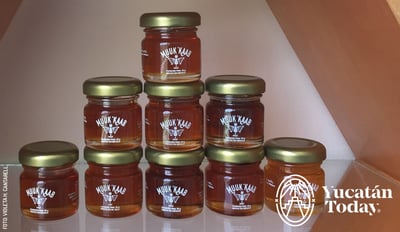
If you’ve never tried it, let us tell you: Yucatecan honey is world-famous for its rich flavor and body. The wildflowers of Yucatán, such as dzidzilché (Gymnopodium floribundum), tajonal (Viguiera dentata), and balché (Lonchocarpus longistylus), to name just a few, produce an intense honey that’s highly coveted worldwide. And that’s no exaggeration: according to El Financiero, approximately 90% of Yucatecan honey is exported to various countries in the European Union and the United Kingdom.
The more “common” honey comes from the European bee (Apis mellifera), the most productive bee species. You can easily find this honey in local markets or directly from producers, and its price per liter usually ranges from $120 to $150 pesos. The color and taste vary by season, depending on which flowers are in bloom.
However, Yucatán is also home to several species of native bees that produce honey in much smaller quantities. This honey, the only kind known to the pre-Hispanic Maya, is believed to have superior nutritional and medicinal properties compared to regular honey. Because it’s rarer, it’s also mucho more expensive: a liter typically costs between $2,000 and $5,000 pesos.
Don’t be fooled when buying honey:
- Always calculate the price per liter, no matter what kind of honey you’re purchasing.
- Honey may crystallize in the bottle; this is perfectly normal and doesn’t affect its quality at all. You can gently warm it to return it to its original state.
- Remember: honey doesn’t expire.
- When buying melipona honey, make sure to purchase from trusted sellers (or directly from meliponarios, bee farms specializing in native bees) to avoid being misled.
- Melipona honey is typically more liquid than regular honey and may even have slightly acidic notes compared to European bee honey.
Find out more about Yucatecan bees and the outstanding honey they produce:
- Honey: Yucatán’s Liquid Gold
- Meet Yucatán’s Native Honeybees
- Five Stingless Yucatecan Bees
Traditional liqueurs
In addition to henequén distillates (which we mentioned earlier), Yucatán also produces a variety of unique alcoholic beverages. The most traditional is xtabentún, a legacy from both pre-Hispanic and colonial times. Xtabentún is considered a digestif: it’s a very sweet drink made with honey, but is best known for its strong anise flavor.

In recent years, several entrepreneurs have worked to create new options that highlight Yucatán’s distinct flavors. This experimentation has resulted in liqueurs made from bitter orange or habanero pepper, as well as a version of xtabentún where the honey flavor stands out more than the anise. Most of these products are served in hotels and restaurants around Mérida and can also be found in specialty liquor stores like La Poshería (on Paseo de Montejo) or Entrepiso, located in the Paseo 60 shopping center.
There’s also a growing craft beer industry, with brands and brews that have won over not just locals and visitors, but also national and international awards.
Find out more about Yucatecan alcoholic beverages:
- These are Yucatán’s Traditional Liqueurs
- A New Generation of Yucatecan Beverages
- Craft Breweries in Yucatán
Fashion
Fashion, though sometimes underestimated, plays a key role in Yucatán's economy. According to Felipe Alonzo Solís and Rodolfo Canto Sáenz, professors at UADY's Faculty of Economics, there are nearly three thousand micro and small apparel businesses in the state. And in 2018, according to a report by the Trust for Regional Development of the South-Southeast, the textile, clothing, and leather goods industry generated an economic impact of 2.39 billion pesos for the state's GDP.
One might think all these figures are associated with traditional attire, but that's not the case. Nowadays, numerous creatives and brands embrace current trends to create designs that are both functional and perfectly suited to the Península's lifestyle.
It's true that the heat presents a sartorial challenge; however, Yucatecans have skillfully utilized fresh and light materials to create stunning looks, regardless of the temperature. Many locals opt for basic cotton garments like t-shirts, polo shirts, shorts, and denim pants. It is in this context that iconic stores such as Caruso and Rams Cottons stand out, offering styles for every occasion at accessible prices.
And since no Yucatecan can resist a good swim, whether in the sea or a cenote, there are also brands like Pau Román and Azul Turquesa that design swimwear ideal for this tropical lifestyle.
Furthermore, social events are an essential part of the family calendar in Yucatán. Baptisms, first communions, weddings, and quinceañera parties are special occasions that require formal or gala attire. In this arena, designers like Alexei Quintal, Diego Cerón, Carolina Pérez, and the highly renowned Vero Díaz stand out. Díaz has participated in Fashion Week Mexico and has dressed celebrities like Ceci de la Cueva. These creative minds develop tops, corsets, and dresses that range from the architectural and avant-garde to the romantic and ethereal. In fact, many people from southern Mexico travel to Mérida specifically for custom-made clothing, as the Yucatecan capital offers a greater variety and adaptability.
There are also more contemplative and artistic proposals, such as that of Elena Martínez Bolio. This visual artist, in addition to creating installations and textile art pieces, designs unique garments made with natural embroidery and dyes. Through hipiles, dresses, and shirts, she expresses social commentary on issues such as demographic growth and the situation of women in vulnerable contexts.
As you can see, fashion in Yucatán is not just identity and history: it is also creativity, economy, and transformation moving into the future.











